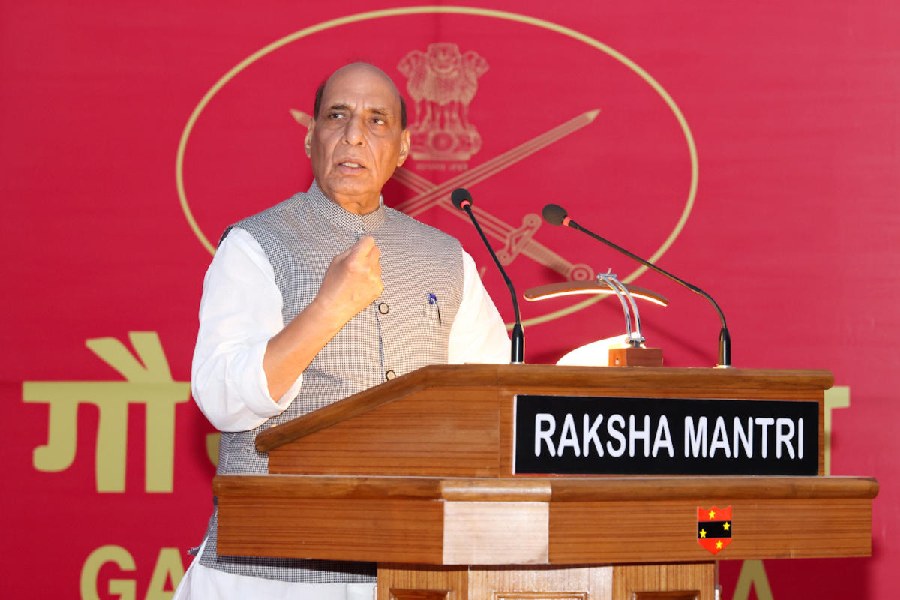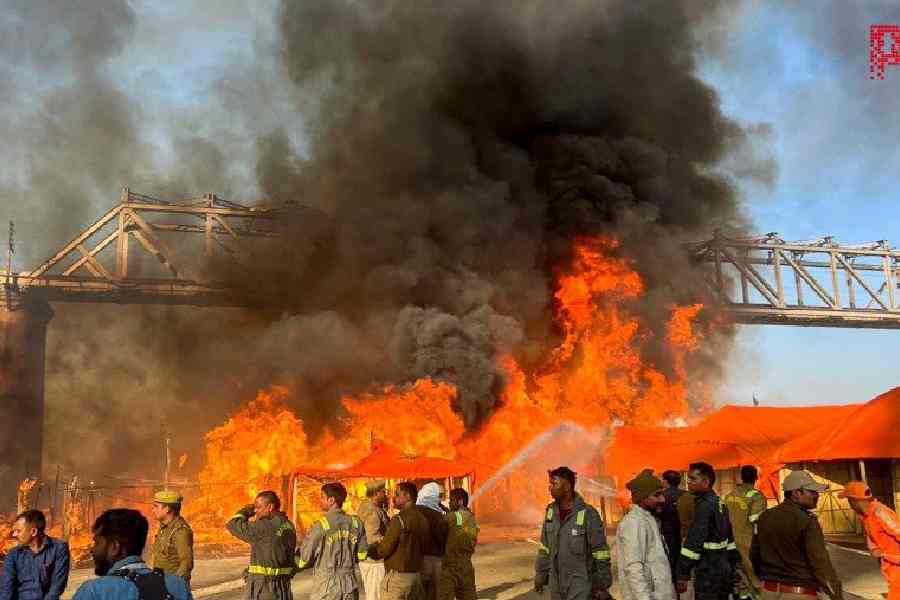Eastern India, including most parts of Bihar, Jharkhand, Gangetic Bengal, eastern Uttar Pradesh and Odisha, could expect two to six extra heat-wave days next month, the national weather agency predicted on Friday.
The India Meteorological Department (IMD), releasing a nationwide forecast for temperature and rainfall during May 2023, also said the maximum temperatures for May 2023 were expected to be above normal across east-central and eastern India.
The maximum temperatures are expected to be below normal in west-central and northwest India, the IMD said. However, the agency said, the minimum temperatures next month are expected to be normal or below normal in most parts of the country.
A heat-wave duration anomaly map from the IMD suggests that a large part of Gangetic Bengal could experience two to four extra days of heat waves next month, over the normal expected one to two days, based on 1993-2016 data. A patch of land along the eastern Uttar Pradesh-Bihar border is expected to have up to six extra heat-wave days.
“The forecasts for the month are based on a combination of the best global weather models,” IMD director-general Mrutyunjaya Mohapatra said.
The IMD defines a heat wave as a period when the maximum temperature touches 40 degrees Celsius or higher in the plains and 30 degrees Celsius or higher in hilly regions, or when the temperature’s departure from the normal ranges between 4.5 degrees to 6.4 degrees Celsius. A departure by more than 6.4 degrees Celsius is a severe heat wave.
Normal to above-normal rainfall is expected over northwest India, many parts of west-central India and northern peninsular India during May 2023, the IMD has said. However, below-normal rainfall is likely in parts of the Northeast, east-central India and the southern peninsular region.
2,770 deaths
Extreme weather events claimed 2,770 lives across India during 2022, the IMD said on Friday, releasing a climate impact summary report for last year that is expected to capture the variability across the country and guide disaster management plans.
The toll includes 1,580 deaths reported from lightning and thunderstorms, the IMD said. While floods and heavy rain claimed 1,050 deaths, the other deaths were from heat waves, hailstorms, dust storms, and gales.
The worst-affected states measured through the lives lost were Uttar Pradesh (589 deaths), followed by Bihar (418), Assam (258), Maharashtra (240) and Odisha (194).
The 2022 climate impact report says Bengal lost nine people to lightning and thunderstorms, eight to heavy rain, three to heat waves, and one to a squall.
Uttarakhand last year experienced the warmest annual mean temperature departure — 1.17 degrees Celsius warmer than the average, followed by Himachal Pradesh (1.16 degrees Celsius) and Punjab (1.05 degrees Celsius). Himachal Pradesh showed the highest increase in average temperature (1.5 degrees Celsius) measured over a 100-year record.
The IMD said Bengal’s average land surface air temperature during 2022 was 25.35 degrees Celsius, about 0.3 degrees warmer than its long-period average calculated from the period 1981-2010, making 2022 the sixth warmest year on record for the state since 1901.
Ten of the state’s 23 districts received normal rainfall while 13 received deficient rainfall in 2022.












